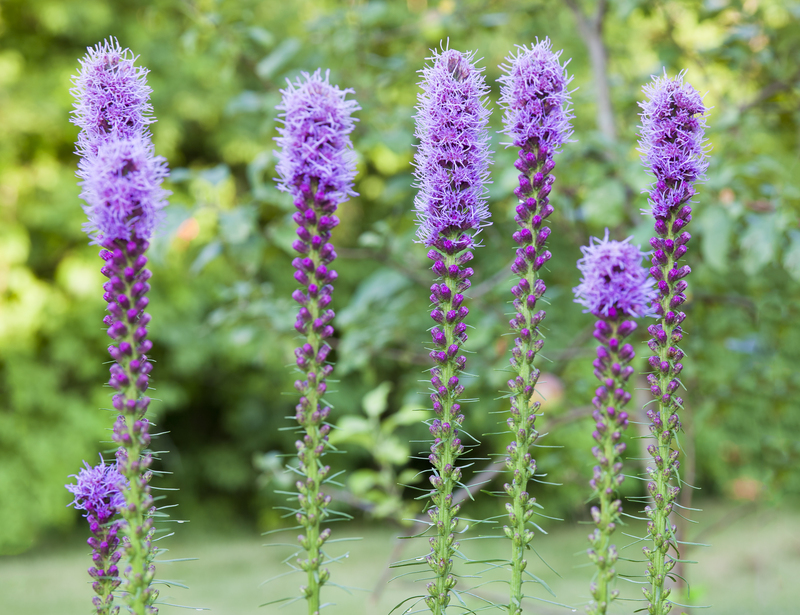Turning Bare Patches into Blooms: Lawn Care Tips for Starters
Is your lawn dotted with bare patches and unsightly thinning areas? If you're new to lawn care and dreaming of lush, green grass, you're in the right place. This guide will walk you through the process of turning those problematic spots into healthy, vibrant blooms -- transforming your lawn into the envy of the neighborhood! Let's dive into these simple and effective lawn repair tips for beginners.
Why Do Lawns Develop Bare Patches?
Before tackling solutions, it's essential to understand what causes bare patches and failing turf. Here are the most common reasons your lawn might be struggling:
- Poor Soil Quality: Compacted or nutrient-deficient soil doesn't support grass growth.
- Shade: Lack of sunlight inhibits healthy grass development.
- Pet Damage: Pet urine or digging causes unsightly spots.
- Foot Traffic: Repeated walking compresses soil, making it difficult for roots to breathe.
- Pests or Disease: Grubs, fungi, and lawn diseases eat away at healthy turf.
- Improper Mowing or Watering: Too much or too little leads to stress and patchy areas.
Identifying the root cause will help you fix existing patches and prevent new ones, setting you up for a strong, green lawn.

Essential Lawn Care Steps for Starters
Ready to restore your yard's glory? Follow these proven lawn restoration techniques to transform bare patches into thriving green spaces.
Step 1: Assess Your Lawn's Trouble Spots
- Walk your lawn and identify all bare or thinning patches.
- Note their size, shape, and location--especially if they're in high-traffic, shaded, or wet areas.
- Look for other symptoms, like discolored grass or visible insects.
Tip: Mark patches with small flags or sticks so you don't miss any during treatment.
Step 2: Test and Prepare the Soil
- Use a simple soil test kit from a garden center to check pH and nutrient levels.
- If the pH is below 6.0 or above 7.0, amend as needed (add lime to raise, sulfur to lower).
- Remove dead grass and weeds from the patches using a rake or hoe.
- Loosen the top 2-3 inches of soil with a hand rake or garden fork.
Healthy soil is the foundation for lush grass growth. Enrich your repair areas with compost or a slow-release lawn fertilizer to give new seedlings the best possible start.
Step 3: Choose the Best Grass Seed (or Sod)
Grass type matters! Select a seed blend or sod that matches your area's climate and your lawn's existing turf:
- Cool-season grasses (Kentucky bluegrass, fescues, ryegrass) thrive in northern regions.
- Warm-season grasses (Bermuda, zoysia, St. Augustine) are best for southern lawns.
- Check for "shade-tolerant" blends if your lawn is partially shaded.
Pro tip: Always buy fresh, high-quality grass seed with a high germination rate for best results.
Step 4: Seeding and Sodding Techniques
For Seeding:
- Evenly scatter grass seed over the prepared bare patches.
- Lightly rake the surface so the seed mixes with soil and isn't exposed to birds.
- For added moisture retention, cover the area with a thin layer (1/4 inch) of straw or peat moss.
For Sodding:
- Cut new sod to fit the patch area snugly.
- Press the edges of the sod tightly against the surrounding lawn to avoid gaps.
- Water immediately after installation to help sod root quickly.
Both methods require consistent moisture--keep the area damp (but not waterlogged) until new grass is well-established.
Step 5: Watering Your Lawn the Right Way
Newly-seeded patches need to be watered more frequently than the rest of the yard--lightly once or twice daily for the first two weeks. As the seeds germinate and grow, gradually decrease frequency while increasing the duration of each watering.
- In warmer weather, water in the early morning to reduce evaporation.
- Avoid saturating the area, which causes seed to rot or wash away.
- Established lawns need about 1-1.5 inches of water per week, from rain or irrigation.
Step 6: First Mowing and Ongoing Maintenance
Wait until your new grass reaches about 3 inches tall before mowing for the first time. Set your mower to a high setting--don't cut more than one-third of grass height in a single pass.
- Keep mower blades sharp to avoid tearing tender new grass.
- Continue regular watering, gradually tapering off as grass matures.
- Avoid excessive foot traffic on new patches for at least 4-6 weeks.
Advanced Tips for Reviving Trouble Spots
Soil Aeration
Periodic lawn aeration can be a game-changer for bare patch restoration. Rent a core aerator or use a manual aerator to punch small holes throughout your lawn, especially in compacted areas. This promotes better air, water, and nutrient movement in the soil--leading to deeper, stronger grass roots.
Top Dressing
After overseeding, lightly top-dress the area with compost or a sandy loam soil mix. This improves germination, maintains even moisture, and enhances soil fertility.
Addressing Persistent Shade
Struggling with grass under a thick tree canopy? Consider:
- Thinning tree branches to let more sunlight in.
- Seeding with shade-loving grass varieties.
- Using mulch or ground covers if grass refuses to thrive.
Preventing Future Bare Spots: Best Practices
Maintain Proper Mowing Height
Mowing too short weakens grass, making your lawn vulnerable to weeds and drought. Keep grass at the recommended height for your variety. Usually, that means:
- 2.5-3 inches for cool-season grass.
- 1-2 inches for warm-season grass.
Fertilize Wisely
- Apply a slow-release lawn fertilizer once or twice a year (spring and fall for cool-season, late spring for warm-season).
- Use a soil test to avoid overfertilizing which can burn delicate roots.
Water Deeply, Not Frequently
- Instead of daily shallow watering, irrigate deeply once or twice a week.
- This encourages roots to grow deeper and withstand drought.
Control Lawn Weeds and Pests
Preventative weed and pest management is key to long-term lawn health. Use pre-emergent weed control in early spring and address pest problems promptly. Healthy, dense grass naturally shades out weed seeds and deters insect pests.
Common Mistakes New Gardeners Make (And How to Avoid Them)
- Overwatering: Too much moisture can rot seeds and roots.
- Ignoring Soil Preparation: Skipping raking and soil amendments sets your new grass up to fail.
- Mowing Too Early: Cutting before new grass is established damages young plants.
- Using the Wrong Seed Type: Always match your blend to your region and sun exposure.
- Forgetting to Fertilize: Young grass needs nutrients for a vigorous start.
Seasonal Lawn Recovery Tips
Spring Lawn Repair
Spring is prime time for repairing bare spots and giving your lawn a growth boost.
- Rake up winter debris and inspect for damage.
- Apply starter fertilizer after sowing seed.
- Consider overseeding the entire lawn if there are many patches.
Summer Lawn Maintenance
- Water early, focusing on new patches during dry spells.
- Raise mowing height to help shade soil and conserve moisture.
- Avoid fertilizing cool-season lawns during peak heat to prevent stress.
Fall Lawn Recovery
- Perfect season for aeration, overseeding, and applying fall fertilizer.
- Patch repair now gives grass time to root before winter dormancy.
Innovative Lawn Solutions: Beyond Grass
If your yard has chronic bare areas -- perhaps under trees or on hillsides -- look beyond traditional seed-to-lawn techniques. Consider these creative landscaping alternatives:
- Ground Covers: Try clover, creeping thyme, or perennial sedum in tough spots.
- Mulch Beds: Apply bark or wood chip mulch under trees for a polished, low-maintenance look.
- Native Wildflower Mixes: Create pollinator-friendly patches in low-maintenance areas.
These options reduce maintenance, conserve water, and bring more biodiversity to your yard.

Frequently Asked Questions for Beginner Lawn Care
Q: How long does it take to repair bare patches?
Most seeds will sprout in 1-3 weeks, with visible improvement in 6-8 weeks under favorable conditions.
Q: How do I keep birds from eating my lawn seed?
Cover new seed with straw, peat moss, or a thin blanket of compost. Some people use garden netting as a temporary barrier.
Q: Can I walk on fresh lawn patches?
Avoid all foot traffic for at least two weeks after seeding, and longer if possible. New roots are delicate.
Q: Should I overseed my entire lawn or just patch?
For scattered or small spots, patch repair is fine. If your lawn is thin everywhere, overseeding the entire area will deliver a healthier, more uniform result.
Conclusion: Your Path to a Lush, Green Lawn
Repairing bare patches doesn't have to be complicated. With the right techniques--from soil prep to seeding, watering, and ongoing care--anyone can transform patchy lawns into beautiful, blooming carpets of green. Whether you're a complete beginner or a first-time homeowner, following these lawn repair tips for starters will help you avoid common pitfalls and enjoy a healthier outdoor space.
Start small, stay consistent, and witness your lawn's remarkable transformation--one bare patch at a time!
```